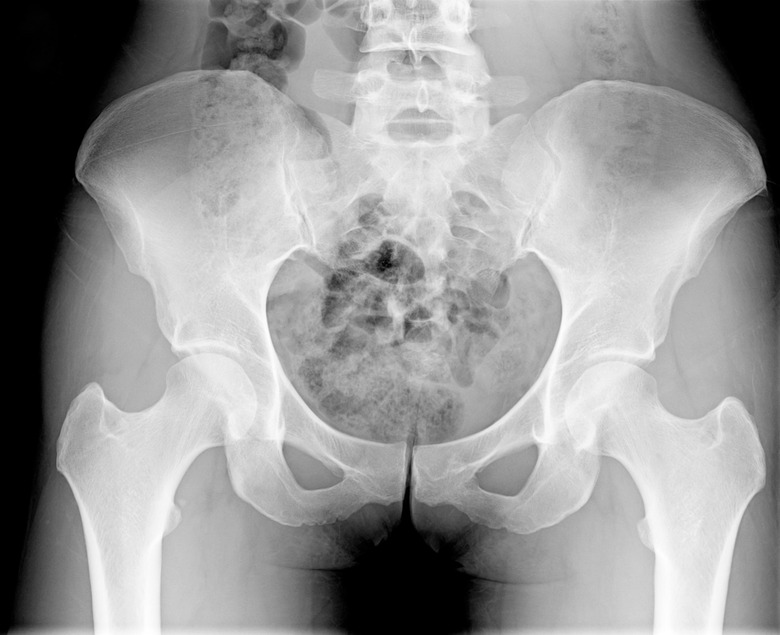6 Types Of Freely Movable Joints
The human body has 206 individual bones. These bones come together at connections called joints. While some joints do not move freely, such as those in the skull, chest and pelvis, others have a range of motion, enabling mobility and the ability to complete tasks without much thought. While they seem simple, joints are complicated body parts with abilities that vary based on their structure.
Simply defined, a joint is a place where two bones join. Joints fall into two basic categories: fibrous and cartilaginous joints, which contain connecting tissue and are mostly fixed in place, and synovial joints, which contain synovial fluid that enables movement as one bone smoothly slides over another. The joints that move are the ones most commonly studied.
The bones in synovial joints are covered with a thin layer of cartilage. Thin-walled sacs, called bursas, provide a cushion between the cartilage, allowing the bones to freely and smoothly move without rubbing against each other. Certain joints also have specialized cartilage such as the disks of the spine or meniscus in the knee that further cushion where the bones meet. Ligaments and tendons serve as connectors for these joined bones and are important to the proper functioning of joints. Ligaments connect bone to bone, tendons connect muscle to bone. Ligaments are essential to joint health; a stretch or tear to a ligament is usually called a sprain, while damage to a muscle or tendon is a strain. There are six types of synovial joints, each allowing its own type of movement.
Pivot Joints Move Side to Side
Pivot Joints Move Side to Side
A pivot joint provides for rotation around only one axis. One bone rotates around another within a concave ring formed in the second bone. This ring is lined with a ligament to make the movement smooth. A pivot joint is what enables the neck to rotate to the left and right and the forearm to make a rotating motion.
Hinge Joints Bend Your Limbs
Hinge Joints Bend Your Limbs
Hinge joints make it possible for limbs to flex and extend along only one axis. The bones fit together perfectly, one convex and the other concave. Elbows, fingers and toes are hinge joints. Certain hinge joints are more complicated to provide limited motion in other directions and are referred to as modified hinge joints. Multiple bones meet at the knee and ankle joints, making them more complex. The resulting structure allows for slight rotation of the knee and circular movement of the ankle.
Ball and Socket Joints Provide Rotation
Ball and Socket Joints Provide Rotation
Ball and socket joints are the most mobile, allowing a wide range of motion. These are the shoulder and hip joints. The bones in these joints fit together with a spherical bone sitting inside another bone that has a concave depression. This structure allows for bending and circular movement as well as rotation of the limb.
Condyloid Joints Twist and Bend
Condyloid Joints Twist and Bend
Condyloid or ellipsoidal joints are ball and socket joints that are elliptical rather than round, allowing bending and circular movement but rendering rotation impossible. This provides movement in two planes: bending and flexing as a hinge joint as well as a certain amount of rotation. These joints are found in the wrist and the base of the index finger.
Saddle Joints Have a Unique Shape
Saddle Joints Have a Unique Shape
Saddle joints are similar to condyloid joints, but the connecting bones are shaped more like interlocking saddles. This allows for a greater range of motion than hinge joints but does not allow complete rotation like ball and socket joints provide. The thumb is the best example of this.
Gliding Joints Allow Smooth Motion
Gliding Joints Allow Smooth Motion
Gliding or plane joints are points where bones meet as flat surfaces and can freely glide past each other in any direction. Gliding joints are found in wrists, ankles and the spine.
Synovial joints enable the human body to move. These complicated connectors make it possible to move from place to place and to eat, work and play. More than simply places where bones connect, they are a complicated assembly of bone, cartilage and fluid, held together with ligaments and tendons that connect to the muscles that make motion possible.
Cite This Article
MLA
Yavorski, Kimberly. "6 Types Of Freely Movable Joints" sciencing.com, https://www.sciencing.com/6-types-freely-movable-joints-6323030/. 17 April 2018.
APA
Yavorski, Kimberly. (2018, April 17). 6 Types Of Freely Movable Joints. sciencing.com. Retrieved from https://www.sciencing.com/6-types-freely-movable-joints-6323030/
Chicago
Yavorski, Kimberly. 6 Types Of Freely Movable Joints last modified March 24, 2022. https://www.sciencing.com/6-types-freely-movable-joints-6323030/
